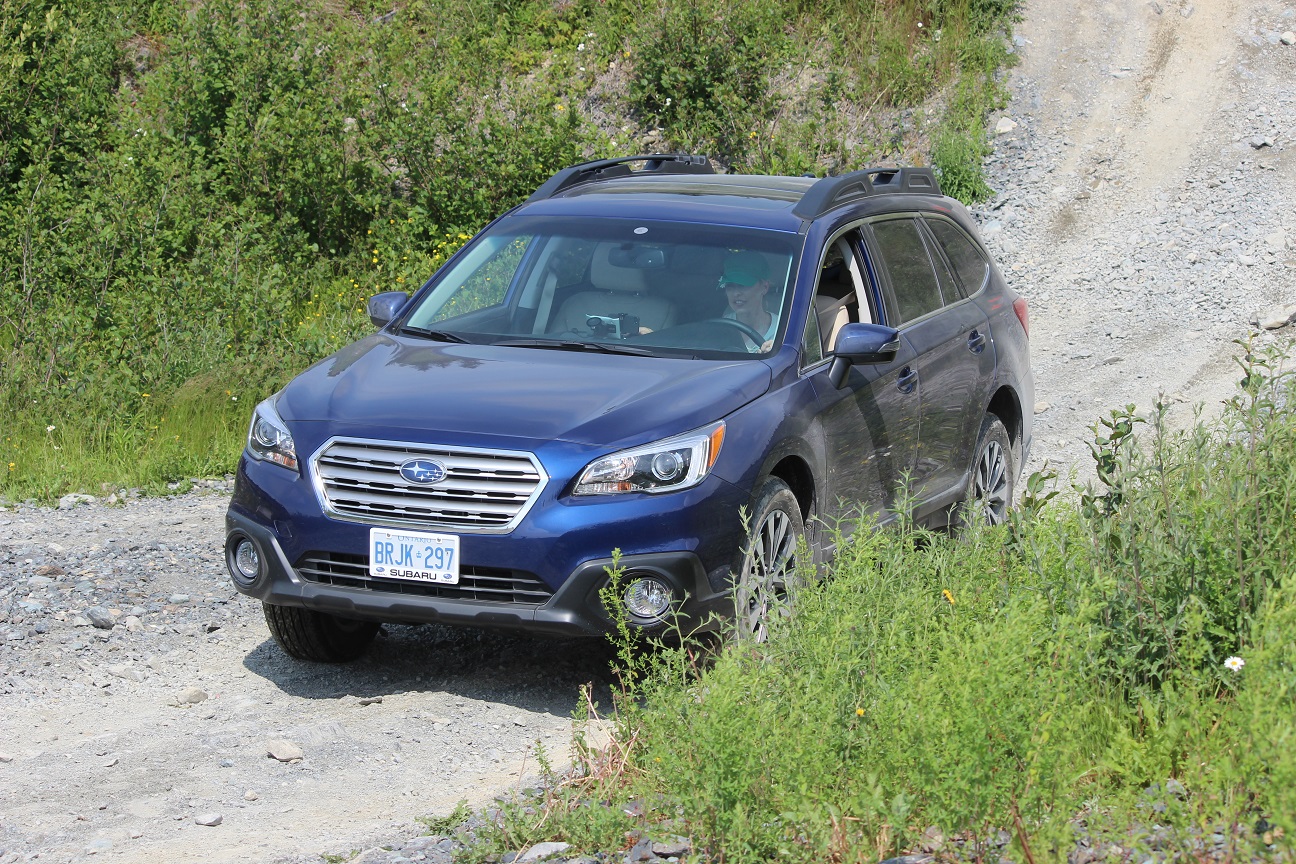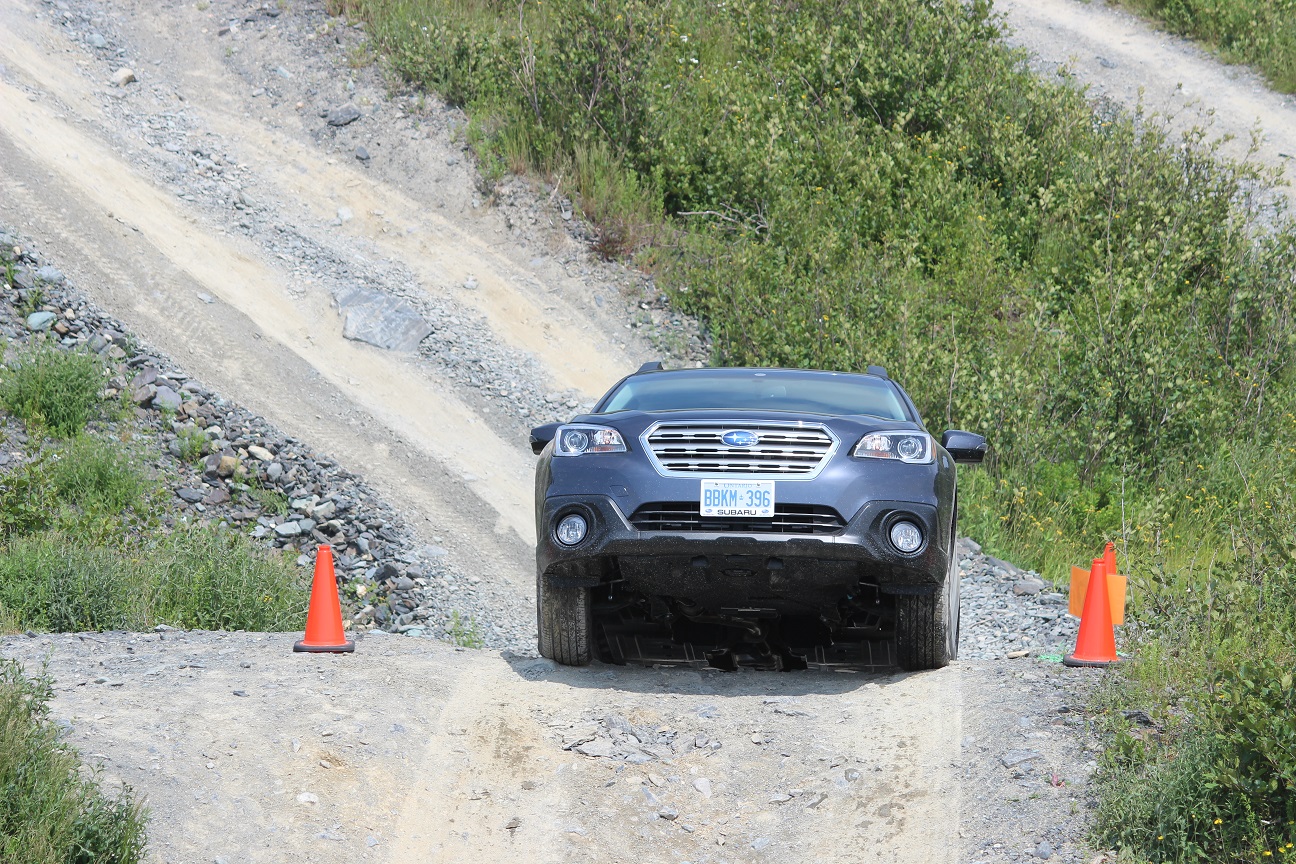X-Mode: 2015 Subaru Outback from station wagon to rock-crawling world beater
- Written by Dan Heyman
- Published in CAR REVIEWS
- font size decrease font size increase font size
- Be the first to comment!
 No matter how many times you do it, the feeling of helplessness is always the same: your hands are on the wheel, feet on the pedals but all you see in front of you is gorgeous, blue sky.
No matter how many times you do it, the feeling of helplessness is always the same: your hands are on the wheel, feet on the pedals but all you see in front of you is gorgeous, blue sky.
Except, when you’re in this situation, it’s not gorgeous; it’s terrifying.
I’ve never been to space, but I gotta think that the way you have no frame of reference to aid your spatial awareness in these situations is as close as you’ll get on land.
Luckily for me, whenever I’ve been on grades so steep they make mountain goats blush, I’ve been behind the wheel of something I know could handle it; a Jeep Grand Cherokee, a Mercedes-Benz G-Class or a Ford SVT Raptor (that last one at least gives you a camera aimed downwards to better see where you’re at).
Not this time, though.
This time, I was behind the wheel of the 2015 Subaru Outback, Fuji Heavy Industries’ wagon/crossover that they insist can handle anything a typical owner (soccer mom, Toronto inhabitant, kayaker)—and some atypical ones (back-country skier, canoe portager)—may throw at it.

A grocery-getter shouldn’t be able to climb over those rocks (me: “Um, how do I get around these?” Subaru lady: “You don’t. You go over them.”), up those grades and through that water.
The thing is, the ’15 Outback is no grocery getter (although it can haul more groceries than before due to a longer cargo area), thanks to a host of new features including the addition of Subaru’s X-Mode AWD system that debuted on the Forester last year.
Activate X-Mode with a press of a console-mounted button and the car takes over. It will apply the brakes when needed going downhill, or throttle when needed going uphill and lock the centre differential. It takes a little getting used to, but once you get on board with it, it’s very effective.

Of course, all this wouldn’t be possible without some structural reinforcement; thanks to the use of more high-tensile steel, torsional rigidity is up 59 per cent, flex down by 35 per cent. For those who feel the latest Outback looks too much like the old one—an attitude I have trouble arguing with—know that Subaru insists that the previous-gen model couldn’t do anything close to what this one can.
Subaru’s claim of 20-inches of ground clearance isn’t just window dressing, either; look underneath those plastic-clad rocker panels, and you see clearly through to the other side. All the underpinnings are tucked in so neatly, helping ground clearance off road, and fuel economy on it. Further, reduced front-and rear overhangs (only the Forester provides better departure and approach angles), mean you won't flatten your bumpers, even if it looks like you’re almost perpendicular with the ground at the base of that hill.
So what does this mean to buyers? Why do you need all this off-road prowess?
The answer, in fact, is pretty simple: if the Outback can do what it’s doing in these photos, then imagine how it can handle harsh Canadian winters. Wouldn’t you like to know that you can get out of your snow-covered driveway without having to dig for hours? Or what about trips to the country, that may involve unpaved logging roads?
 These obstacles no longer have the same affect they might have had previously, and once you’re back on the beaten path, you have a (somewhat) low slung car, instead of a big, wallowy, SUV.
These obstacles no longer have the same affect they might have had previously, and once you’re back on the beaten path, you have a (somewhat) low slung car, instead of a big, wallowy, SUV.
The Outback has its legions of followers, and rightfully so.
